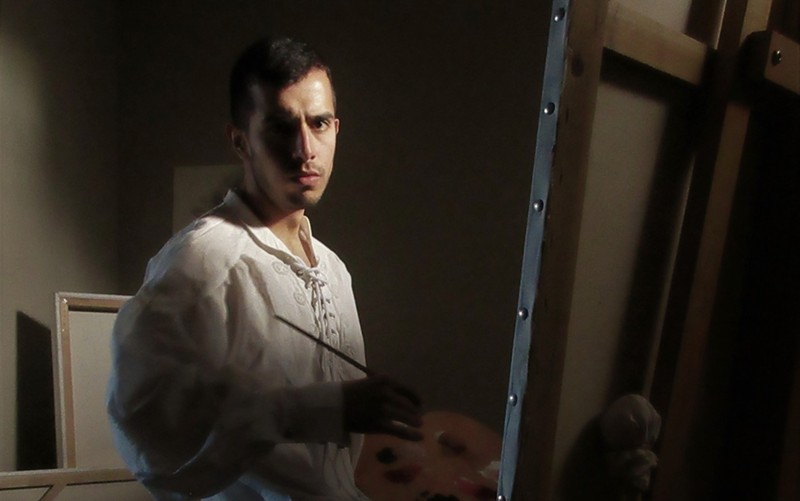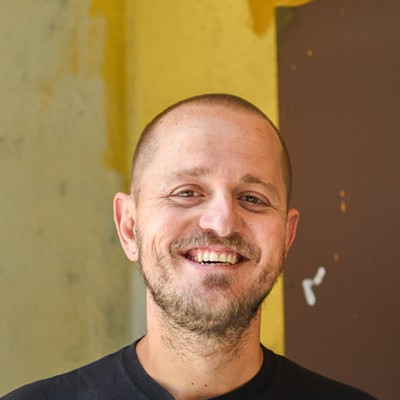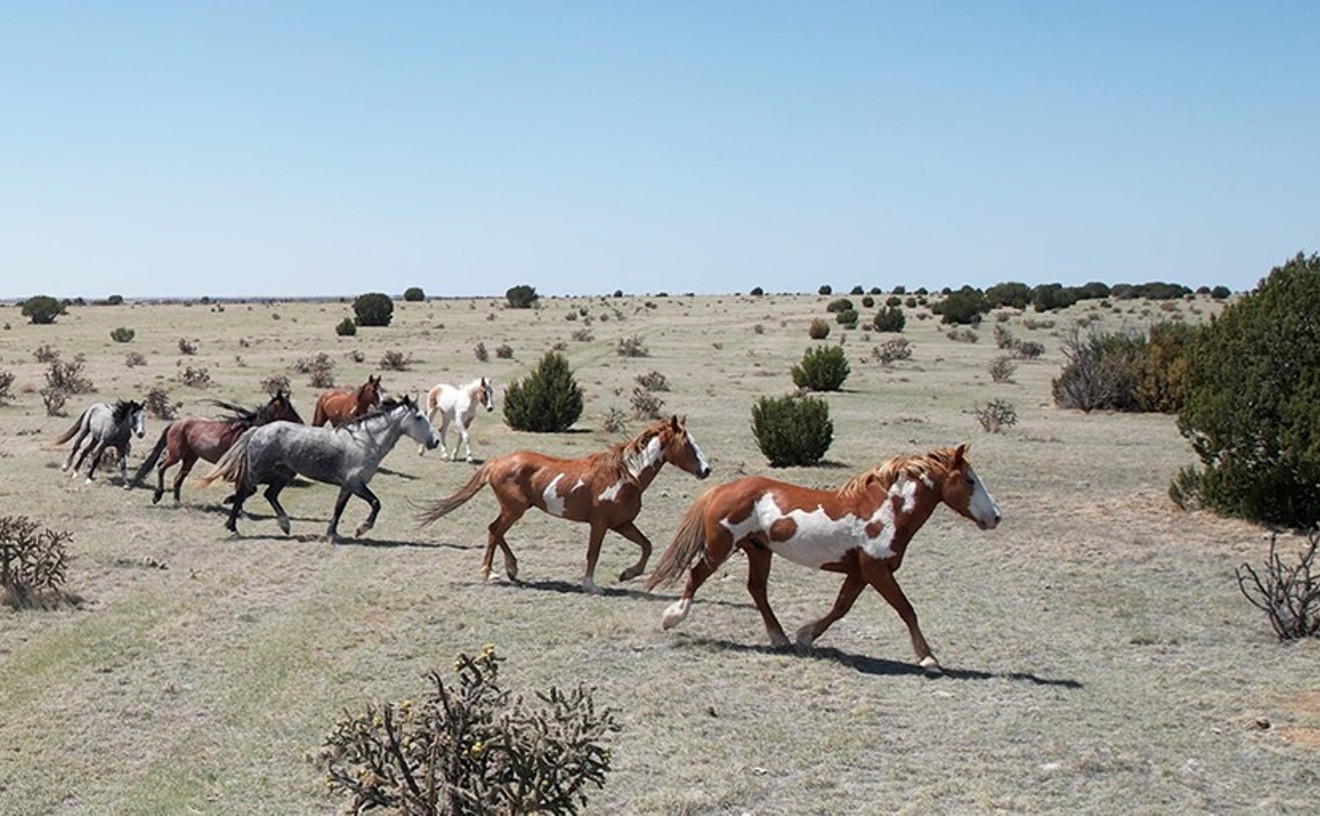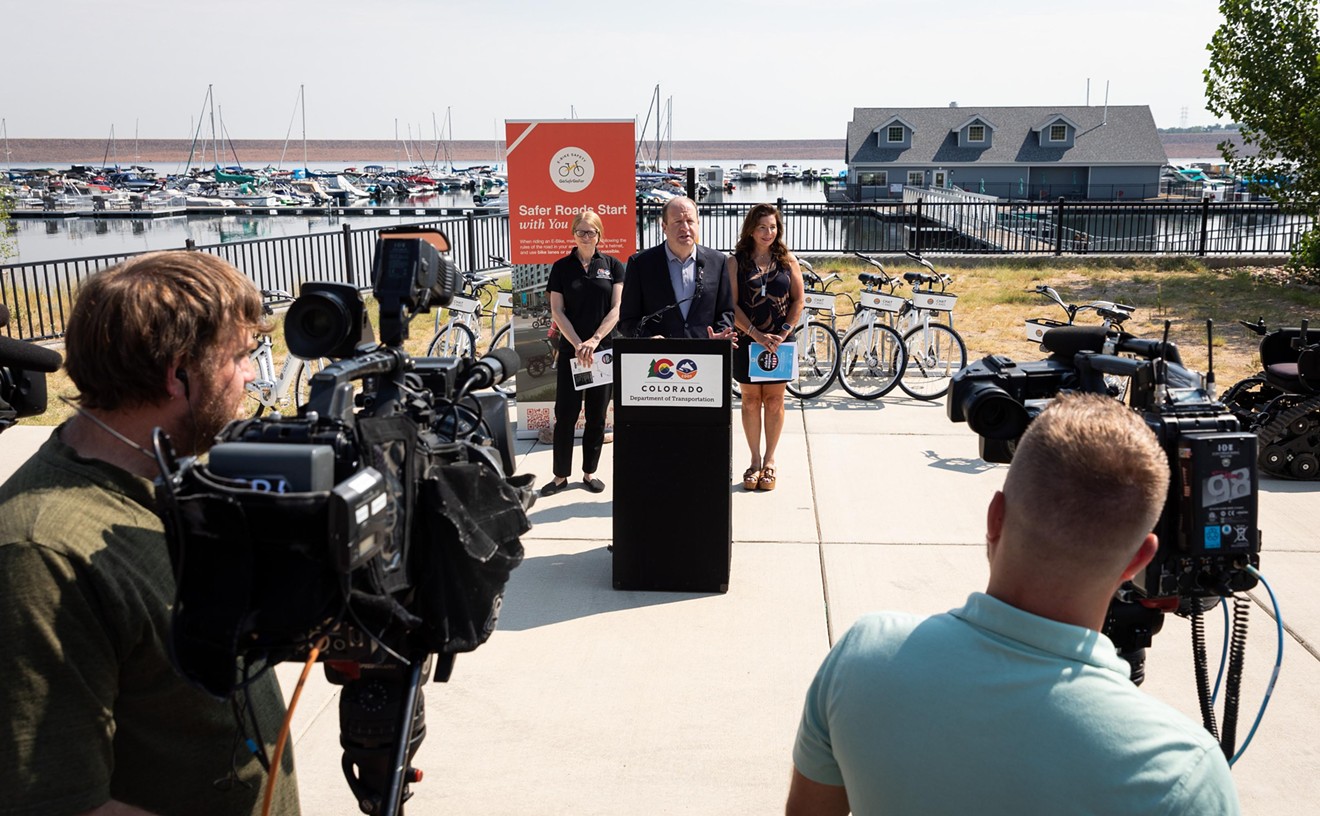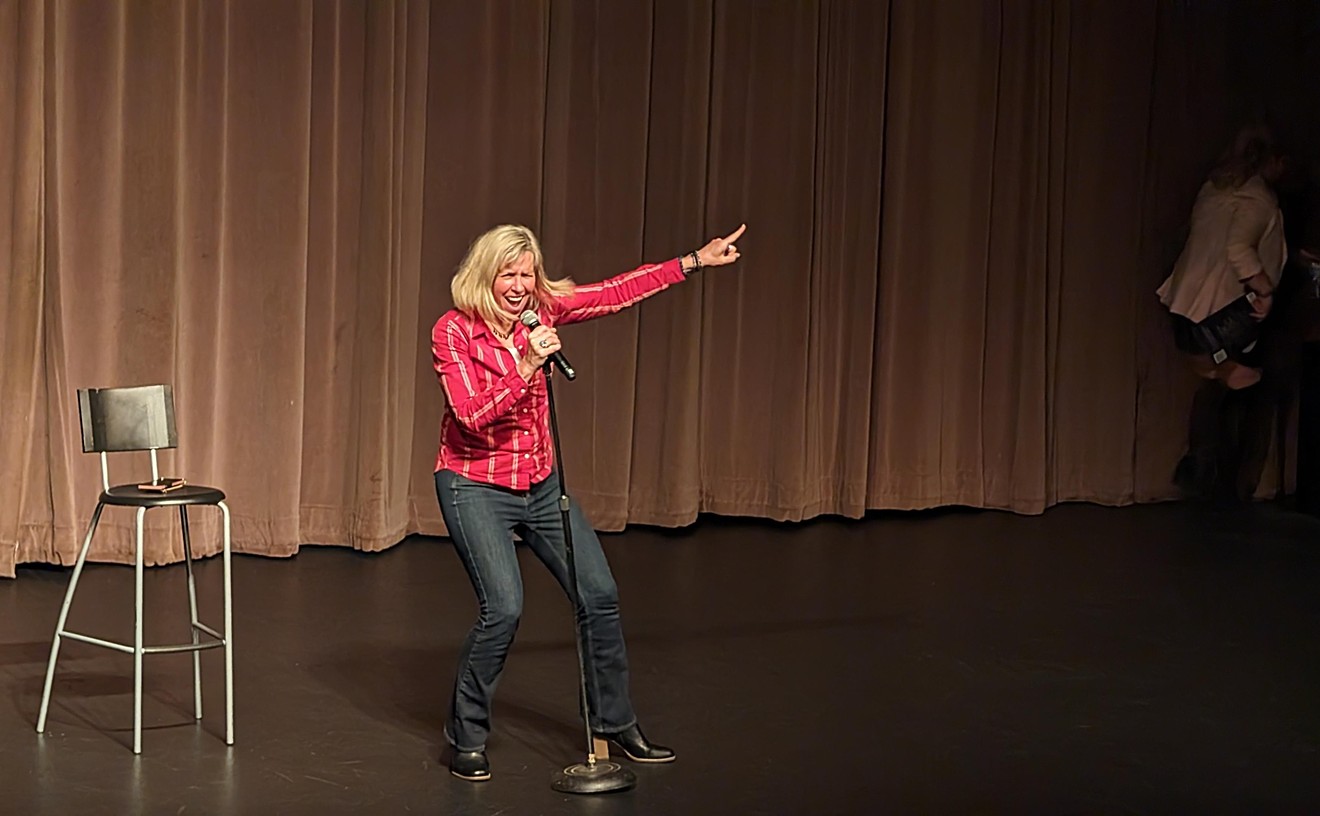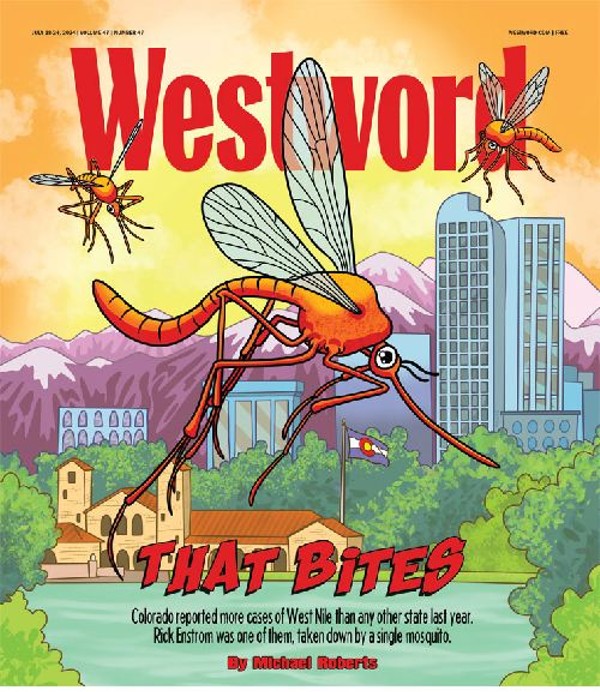Like many seniors graduating from art schools around the country, Metropolitan State University student Adrian Raya was eager to share several years of his work with his family, friends and colleagues at his thesis show.
Raya moved with his family from Mexico to the United States fourteen years ago, and he believes that residents of both countries do not value art as they should.
“My mom...she has always been very supportive and more understanding than the rest of my family when it comes to me pursuing an art degree,” Raya explains, adding that many in his family were baffled. The exhibition would be a chance for him to demonstrate what he does and why his efforts as an artist — and also an arts educator — are serious and worthwhile.
His plan was to have three bodies of work at three locations across the city. He would have an installation exploring emojis and ethnic identities in a public area in an MSU building, another in a campus gallery, and two paintings on display at the Chicano Humanities and Arts Council.
Then came the COVID-19 shutdowns. Schools buildings went dark, classes migrated online. And the senior thesis shows were shut down.
“There goes the one night I could have taken them out and shown them what I’m doing,” he laments.
But his teachers quickly pivoted, transforming the Spring 2020 BFA Thesis Exhibition, which includes the work of Raya and 34 other MSU students, to an online version that will go live on May 1 on the Social Distance Gallery, the project of artist Benjamin Cook, who organized an Instagram channel showcasing BFA and MFA thesis shows from across the country.
Raya's creative practice looks at race, culture and art history, exploring which creative traditions art educators make available to students of color and which they do not. He looks back on his own experience as a high school student interested in Renaissance art; teachers gently prodded him toward works by Diego Rivera and Frida Kahlo, despite his preference for Michelangelo and Leonardo Da Vinci.
As he recalls: “It was likely a good intention from these teachers: ‘This is more your route...folky paintings and flowers and suns and moons at your local taqueria.' That’s what was presented as an alternative to the “Mona Lisa” and the Sistine Chapel. Ultimately, looking back, we heard, ‘Here’s a Mexican artist who would reflect you more.’”
Instead, his work revisits Renaissance paintings, examining how they change when alternative phenotypes — physical attributes associated with various races and cultures — are incorporated into classic portraits. “I’m viewing this more as an art educator [than as] an artist,” he explains.
And because they will give him a broader audience to educate, Raya says the shift to virtual exhibitions hasn’t been all bad. But some of his peers are having problems, he adds: “I see students struggling. 'Do things still matter? Should I still complete the artwork I’m doing?'”
Yes, he says.
Taking the exhibits online "helps the class and the individual artists get their works out to a wider audience,”
he concludes.
Starting May 1, see Raya's work in the MSU senior thesis show online; head to the Social Distance Gallery Instagram page now to discover student works from around the United States.
[
{
"name": "Air - MediumRectangle - Inline Content - Mobile Display Size",
"component": "12017618",
"insertPoint": "2",
"requiredCountToDisplay": "2",
"watchElement": ".fdn-content-body",
"astAdList": [
{
"adType": "rectangle",
"displayTargets": "mobile"
}
]
},{
"name": "Editor Picks",
"component": "17242653",
"insertPoint": "4",
"requiredCountToDisplay": "1",
"watchElement": ".fdn-content-body",
"astAdList": [
{
"adType": "rectangle",
"displayTargets": "desktop|tablet"
},{
"adType": "rectangle",
"displayTargets": "desktop|tablet|mobile"
}
]
},{
"name": "Inline Links",
"component": "18838239",
"insertPoint": "8th",
"startingPoint": 8,
"requiredCountToDisplay": "7",
"maxInsertions": 25
},{
"name": "Air - MediumRectangle - Combo - Inline Content",
"component": "17261320",
"insertPoint": "8th",
"startingPoint": 8,
"requiredCountToDisplay": "7",
"maxInsertions": 25,
"watchElement": ".fdn-content-body",
"astAdList": [
{
"adType": "rectangle",
"displayTargets": "desktop|tablet"
},{
"adType": "rectangle",
"displayTargets": "desktop|tablet|mobile"
}
]
},{
"name": "Inline Links",
"component": "18838239",
"insertPoint": "8th",
"startingPoint": 12,
"requiredCountToDisplay": "11",
"maxInsertions": 25
},{
"name": "Air - Leaderboard Tower - Combo - Inline Content",
"component": "17261321",
"insertPoint": "8th",
"startingPoint": 12,
"requiredCountToDisplay": "11",
"maxInsertions": 25,
"watchElement": ".fdn-content-body",
"astAdList": [
{
"adType": "leaderboardInlineContent",
"displayTargets": "desktop|tablet"
},{
"adType": "tower",
"displayTargets": "mobile"
}
]
}
]

